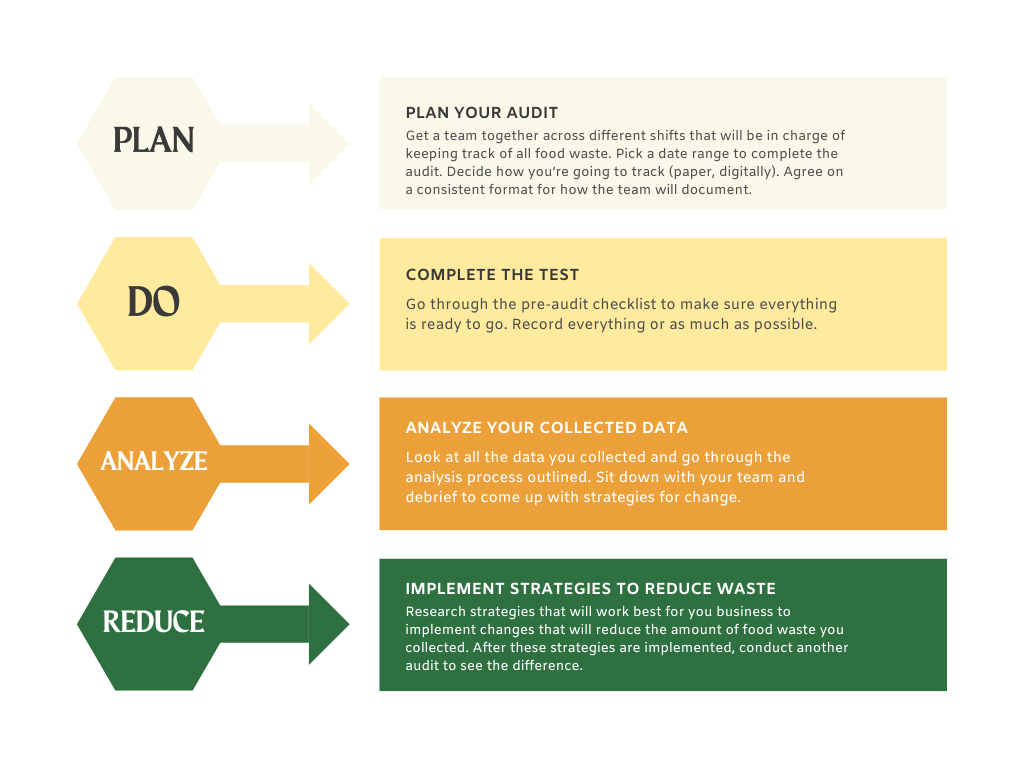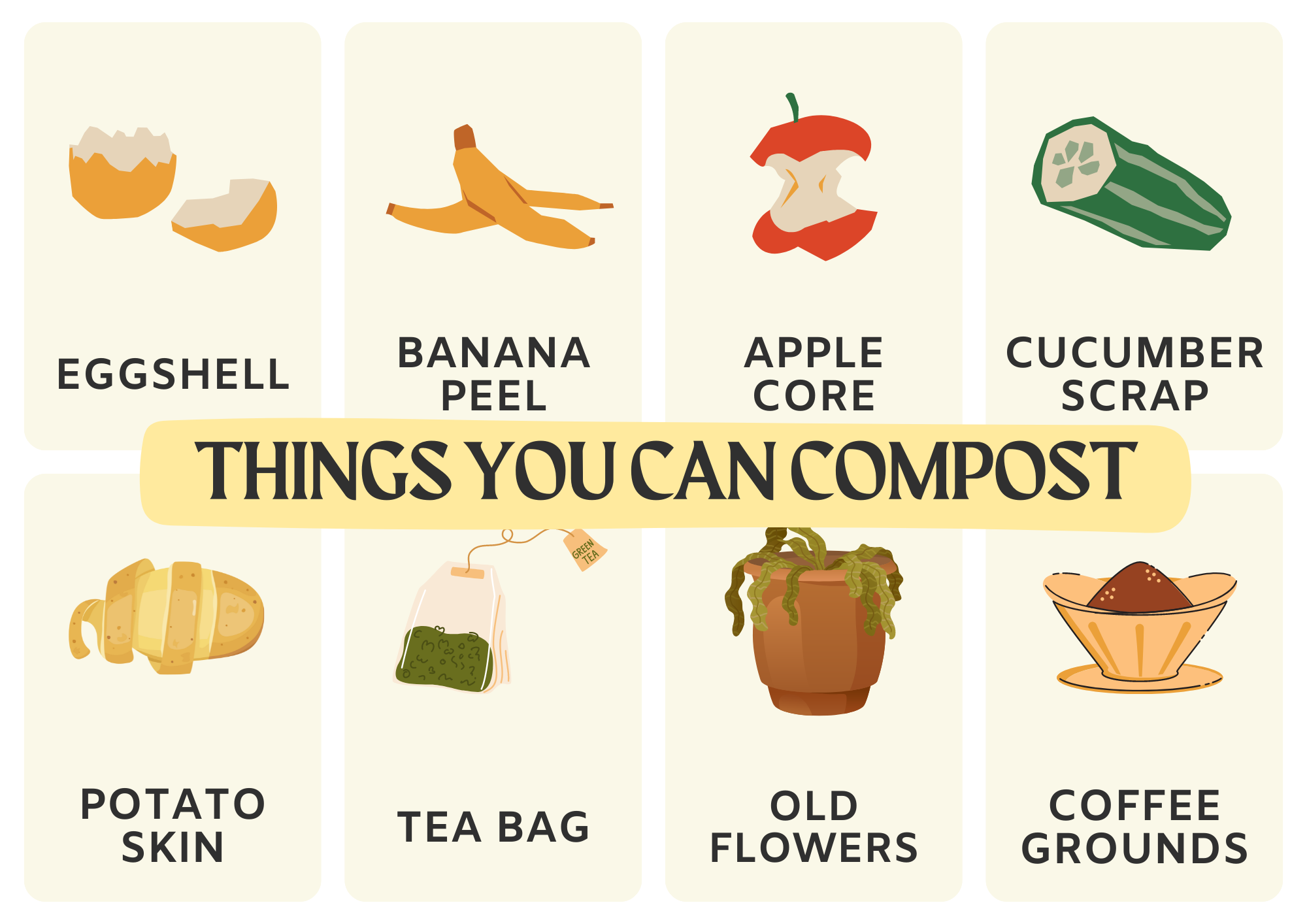It’s no secret running a business costs a lot of money and has a lot of moving parts. Implementing new strategies often takes time and can feel like an uphill climb. When it comes to sustainability, the switch doesn’t have to feel like it will break your business or your bank.
Welcome back to our April blog series, EnviroInsights, where we turn your attention to your part in environmental issues. Last week, we tackled how prioritizing eco-friendly practices is a smart and necessary business strategy. This week, we are going to keep the ball rolling by zooming in on the restaurant industry.
Every year 80 million tons of food, equal to 149 billion meals, go to waste in just the U.S. In the restaurant industry alone, this waste costs about $162 billion. To put this in perspective, you could buy 5,400,000 cars at $30,000 each with $162 billion. In order to reduce both food waste and unnecessary financial losses, here is our 4 step guide to reducing your food waste.
1. Understand Where Your Food Waste is Coming From
You can’t figure out where to go if you don’t know where to start. Before you can implement changes, you have to know where the problem is.
There are two types of food waste, according to TouchBistro: food that gets thrown out before it gets to the customer, and food that gets thrown out after. Conducting a food waste audit where you track all your food waste can show you whether you have an issue with pre-consumer or post-consumer waste.
This might look like a simple sheet of paper that hangs in a central location where employees will report all the food that gets thrown out for a week. Or you can link an inventory management program with your POS system to do this digitally. Then, you can have a visual report of whether your waste is due to spoilage, miscalculated portions, spillage, or refires. For a more detailed guide for how to carry this out click here.
Miscalculated portioning can be avoided by training kitchen staff to cook the correct amount of food so that you have less to throw out post-consumer. Spillage is a tough one to avoid since it is usually due to human error, but you can urge your staff to be as careful as possible and to wear the correct footwear to reduce chances of spillage through slipping on kitchen or dining floors. Refiring is when food is sent back to be remade. This can be reduced by training wait staff to always ask about allergies and to repeat orders back to customers. Lastly, spoilage happens when food is improperly stored or refrigerated. This can be avoided by taking control of your inventory.

Adapted from Lean Path’s Guide for Conducting a Food Waste Audit
2. Take Control of Your Inventory
Do you have food that seemingly gets “lost in the fridge?” One day it comes in fresh and then, suddenly, 2 weeks later you find it hiding on the top shelf 3 days past its expiration date. So, you have to throw it out.
Spoilage is one of the 4 biggest causes of food waste and can be due to improper refrigeration, ordering more than you need, and ineffective inventory management. There are 2 really simple ways you can make sure that your food doesn’t go bad: don’t overbuy and rotate your inventory.
If you complete your food waste audit and find that your inventory is consistently spoiling, maybe you need to reexamine how much you’re ordering. Find out how much product you need to get by each week and then order only a little bit more to allow for a bit of wiggle room. Remember to account for fluctuations in seasons or more popular days. This way you might only have to figure out how to use 2 extra slabs of chicken instead of 10.
The other common way food gets spoiled is when new products get used first. We know, we know it’s exciting to have the new inventory shipment but they’re gonna have to wait their turn.
Adopt the FIFO, or first-in-first-out method, for organizing your inventory. When the inventory truck drops off a delivery, all of that new product should go behind the existing inventory. This way, the older product gets used first and then the new product moves its way to the front of the fridge. Now, you shouldn’t find your Monday expiration dates behind the Wednesday expiration dates.
3. Get Creative and Reuse!
It’s okay if a zero-waste goal is too ambitious for you to strive for, especially if this is going to be a big change for your business. Luckily, there are small ways you can work towards getting your business up to speed.
Get creative! If you have leftover vegetable or chicken remnants, try making your own broth for soups! Leftover bread? Make croutons! Did you know you can use coffee grounds as fertilizer? Do you have some food going bad soon? Come up with specials that use those ingredients one day to get rid of them while still making profit! Brainstorm and research fun and practical ways you can turn your leftover food waste into something new!
Perhaps one of the best ways to use your leftover scraps is composting. Fruits, veggies, potato skins, tea bags, coffee grounds, eggshells, and old flowers can actually be used to make soil where you could grow more ingredients! Composting isn’t a fast process, unfortunately, because you’re working against the decomposition clock. So, get started early and have a plan! Encourage your employees to compost at home and bring it to work as a brand incentive!

4. Give Away Instead of Throwing Out
Throwing out purchased food is money down the drain. No business wants to lose money that way, especially when they can prevent it.
So, try donating leftover food to charity who can get it to people who need it! Another option is encouraging customers to take their leftovers home in a takeout container to eat later. Make sure you have containers in-house, and try a paper option instead of styrofoam so it can be recycled!
Lastly, your employees work hard to get your food to the world. So, one way to reduce waste and say thank you is to offer staff meals with your leftover food! Is it closing time and chicken is about to expire? Turn it into a chicken caesar salad for your staff! It’s a win-win, food gets eaten and your staff gets a meal!
The world is moving towards sustainable living. 48% of millennials and 40% of Gen Z favor restaurants that prioritize sustainable practices. These strategies, while taking a bit more time and effort, will make a big difference! As we discovered last week, this will benefit your business as well! Time and effort will make the difference for switching to sustainability!
Want more EnviroInsights? Check out the rest of the series here:
Keep up with all things LGC and EnviroStaff on our socials!
About EnviroStaff
EnviroStaff is a division of LGC that focuses on making placements in the environmental industry. We build partnerships with clients to fill open positions on their team and have recruiting capabilities within multiple markets throughout the U.S. Working closely together, EnviroStaff will recruit environmental industry professionals based on your job description and requirements. By making direct hire placements, EnviroStaff can help clients save time and money often associated with recruiting.





